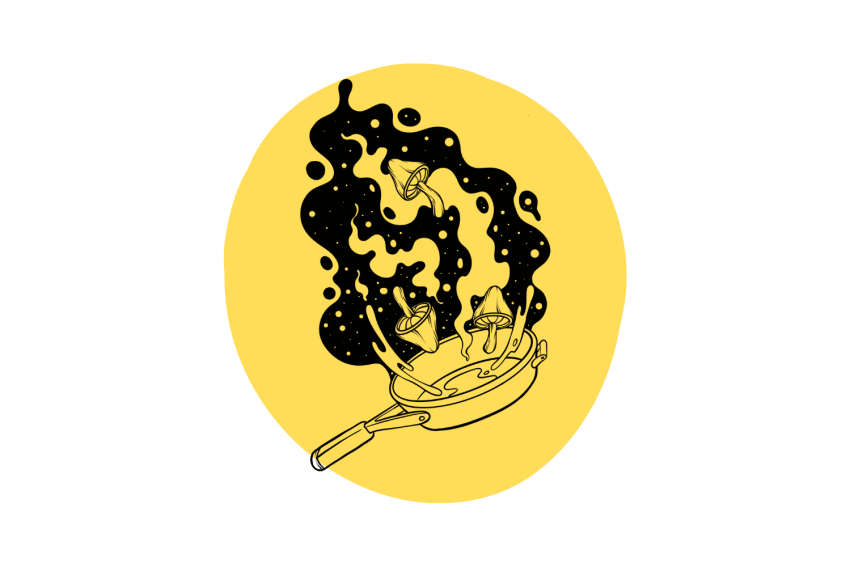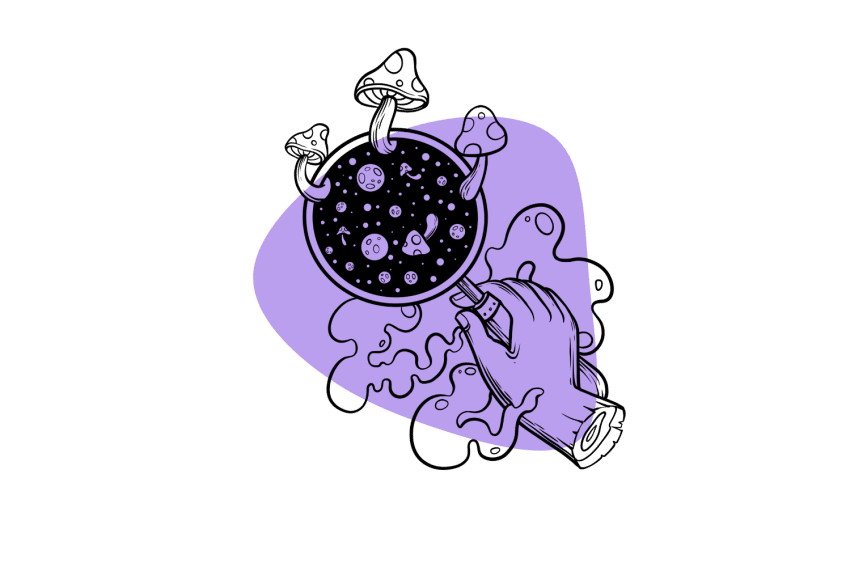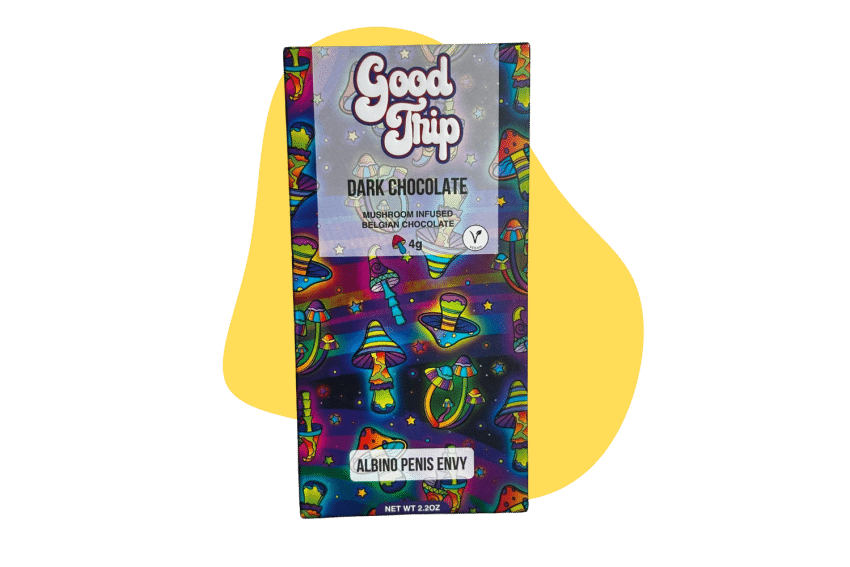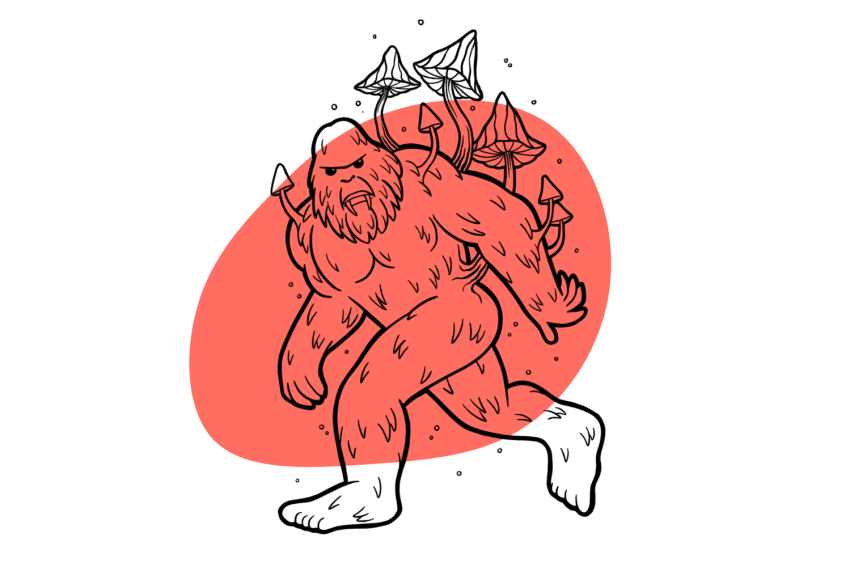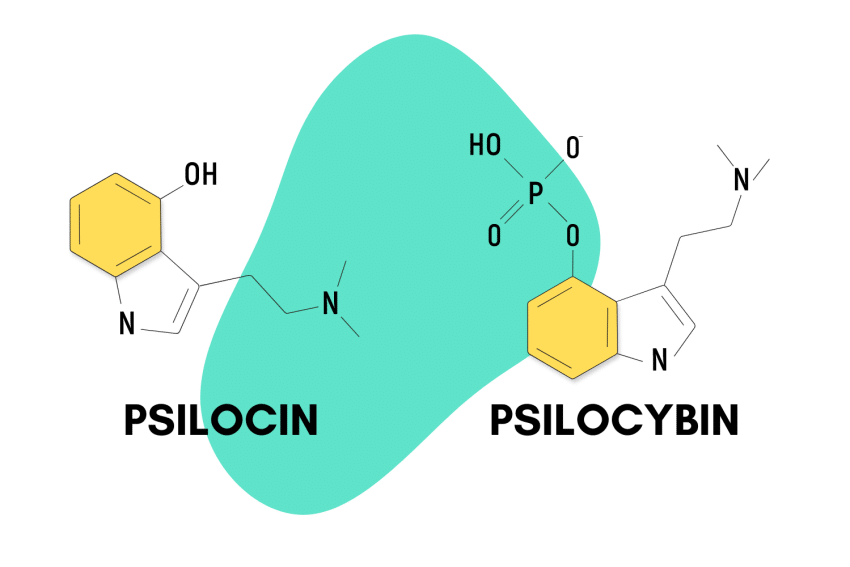Microdosing Ketamine: Fundamentals, Dosing, Risks, & Philosophy
Microdosing ketamine is pretty experimental at this point, but here’s what we know.
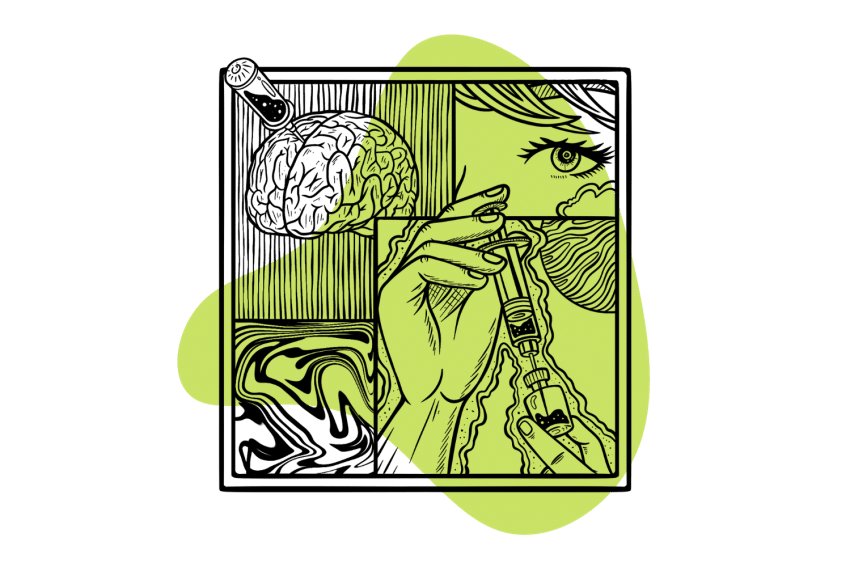
Ketamine infusions have shown impressive, rapid-acting benefits for suicidal thoughts, depression, PTSD (post-traumatic stress disorder), and chronic pain. However, the difficulty lies in ketamine’s short-lived effects, with many people needing boosters over several months or years to maintain effect.
Some people have instead opted for daily microdosing instead.
Microdosing is the practice of taking very small (non-active) doses of psychedelic compounds. The idea is that small doses are too low to cause inebriation but maintain some of the neuroprotective, antidepressant, and other benefits.
Before we dig into this topic, it’s important we’re clear about something — there’s no concrete research to prove microdosing ketamine is either safe or effective. This is still a brand-new (albeit trendy) concept. Much more research needs to be published before we can confirm this practice is either safe or effective.
All that said, in the interest of harm reduction, the article below covers what ketamine microdosing is, how to do it, and some ideas about how it could work.
What Is Microdosing Ketamine?
Microdosing ketamine is taking a regular, very low dose that doesn’t alter your perception. Typically, microdosing is done for a period of time, not indefinitely.
Like other microdosing regimes, ketamine is not taken every day. Instead, most users set up a microdosing schedule — where they take doses on specific days, and plan days off on others.
A common schedule is one day on and two days off. This practice is used to reduce the impact of tolerance formation and limit the potential for addiction or abuse.
How Much Is a Ketamine Microdose?
A standard ketamine microdose isn’t established. Microdosing other psychedelics like psilocybin or LSD is typically about one-tenth of a full or “macro” dose.
We know from studies of intravenous ketamine treatments for mental health that different people respond to different doses. Many clinics work with 0.3-0.5mg per kg. However, some people respond to 0.1 mg per kg. Another might need much more.
So, everyone’s ketamine microdose will be different and will require experimentation. Again, the goal is a minimum effective dose that does not make you feel high.
The numbers above are for infusions done in clinics where ketamine is 100% bioavailable. Most people microdosing ketamine will go the oral or intranasal route.
Ketamine has different bioavailability by each route:
- Oral – 17-24% [1].
- Intranasal – 45% [2]
- Sublingual (under the tongue) – 30% [2]
- Suppository – 30% [3]
For example, an intranasal 15 mg dose of ketamine would result in (roughly) 6.75 mg of ketamine entering your system.
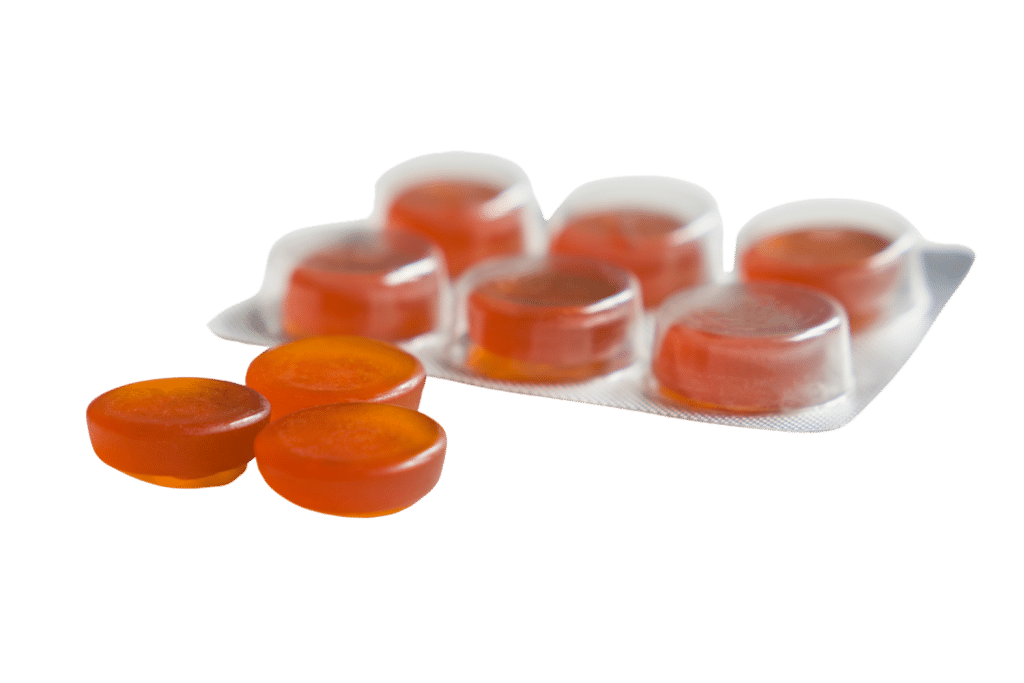
How to Microdose Ketamine
Ketamine microdoses can be purchased from online ketamine therapy providers in lozenge form for sublingual administration. These come in different strengths, and the provider works with you to adjust the dose.
You may find some online guides recommending snorting ketamine, but we don’t recommend doing this regularly as it can damage nasal passageways.
The easiest way to microdose ketamine is by dissolving it in water to use with a dropper or by making your own ketamine nasal spray.
How to Make Ketamine Microdoses
Ketamine is freely water-soluble, so you can create volumetric microdoses like you would with a tab of LSD in a water dropper.
Here is how to make ketamine microdoses:
- Determine what you want your dose to be.
- Take note of the volume of your vial and dropper.
- Do your math (a dose of 0.1 mg in a 100 ml vial with a 1 ml dropper requires 10 mg of ketamine).
- Use a quality, calibrated scale to measure your desired amount.
- Measure and add distilled water (heating the water will allow the ketamine to dissolve easily and quickly).
- Mix finely crushed crystals into the dropper.
How to Make Ketamine Nasal Spray
Making your own ketamine intranasal spray takes advantage of higher intranasal bioavailability.
- Purchase spray bottles and saline solution from a pharmacy or online.
- Determine the volume of the bottle and the volume of each spray.
- Again, do your dosage math here (a dose of 0.1 mg in a 100 ml vial with a 1 ml dropper requires 10 mg of ketamine). Mix according to the size of your spray bottle.
- Mix well.
It’s possible to oversaturate a solution when making a nasal spray, meaning not all the ketamine will be dissolved. If this happens, you are probably not microdosing.
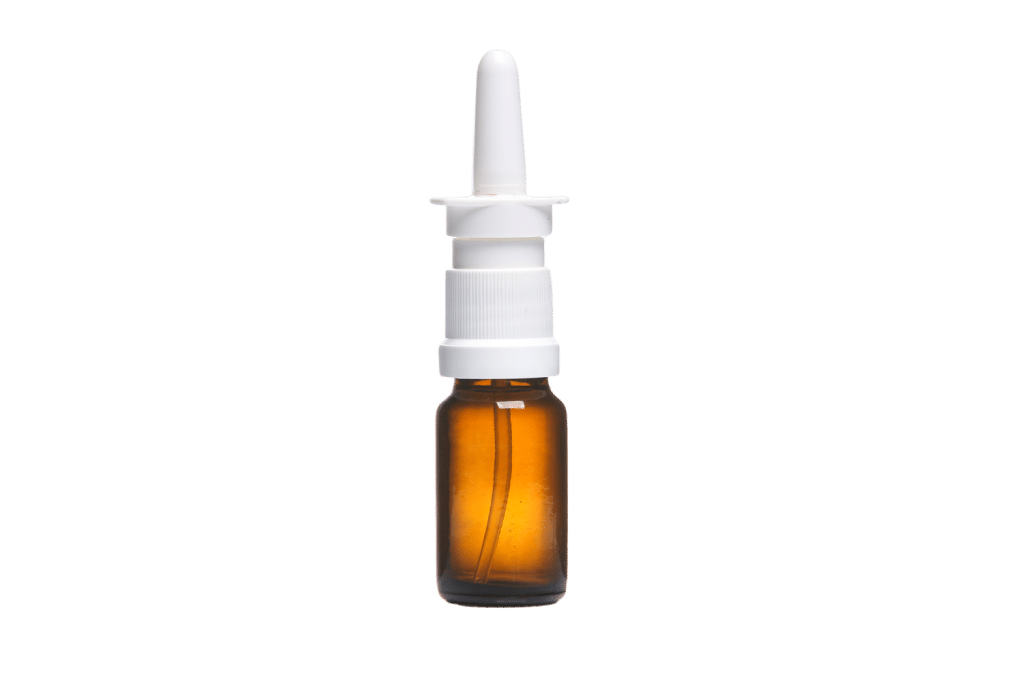
Microdosing Ketamine Research
While there is a growing body of ketamine research, there is little about microdosing, particularly its long-term effects.
Microdosing, in general, has come under criticism in the scientific community after some studies suggest any effects are based on “expectancy effects” (or the placebo effect).
However, the jury is still out on microdosing, with many people finding it beneficial. Here is what we know about ketamine microdosing so far:
One study looked at patient reports and “very low dose ketamine.” Patients showed improved mood, cognition, and sleep. The authors only noted mild lightheadedness as a side effect when ketamine was administered every two to three days. Some patients retained benefits after stopping ketamine. [4]
Comparing low-dose and very low-dose ketamine showed both as effective, but very low-dose less so, as it showed shorter acting and less powerful effects. [5]
While it’s not technically a microdose, one study gave daily oral doses of (0.4 mg/kg) for 28 days. Improvements in anxiety and depression were noted, along with diarrhea, trouble sleeping, and restlessness, but no serious adverse effects were reported. Benefits occurred rapidly. [6]
Some research with rats noted increased positive responses to rodents that were “low performing” in prescribed tasks. This led the authors to speculate the low-dose regime could relieve some symptoms of depression. [7]
Is Microdosing Ketamine Safe?
It’s well established that daily ketamine can cause bladder damage. However, these are usually associated with heavy ketamine abuse.
One study safely gave low-dose ketamine to patients for twenty-eight days without serious adverse effects. Current data on the long-term effects of therapeutic ketamine doesn’t draw clear conclusions on how safe microdoing could be.
Also, some people experience side effects while microdosing ketamine, such as:
- Dizziness
- Nausea
- Feeling sleepy
- Confusion
Generally, people with the following conditions should not take ketamine:
- Cardiovascular disease
- Uncontrolled hypertension
- Personal or family history of schizophrenia
- Personal or family history of psychosis
- History of substance abuse
- Pregnant or breastfeeding
How Does Microdosing Ketamine Work?
Any ideas we have about how microdosing ketamine works are speculation. We aren’t even sure how ketamine works for mental health in general, as it interacts with many different receptors in the body.
Generally, ketamine is thought to create new synapses in the brain [8]. The cascade of reactions has been suggested to affect brain circuitry, which regulates mood and stress.
Here is a (rough) map of the cascade: [9]
- Inhibition of NMDA receptors
- Release of neurotransmitter glutamate
- Stimulation of AMPA receptors
- Release of BDNF
- Activation of mTOR signaling pathways
That said, there are other neurotransmitters at play, like GABA and serotonin, along with other brain regions implicated with ketamine.
In truth, there are many mechanisms ketamine could be working on, and the big question with microdosing is how dose-dependent ketamine’s effects are, which we currently lack data on.
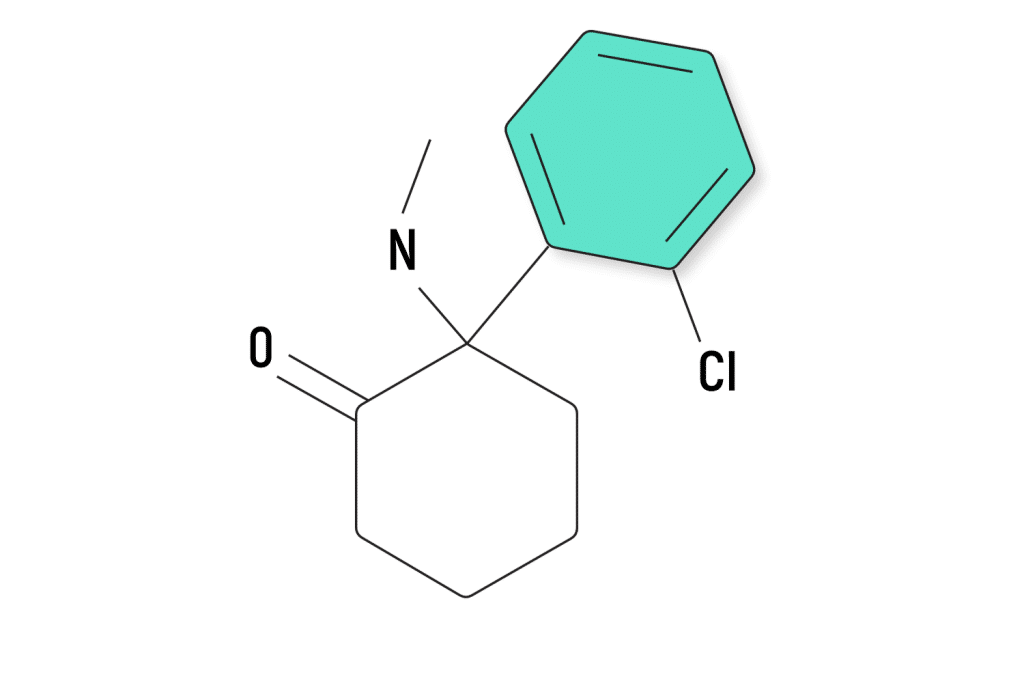
What Time of Day Should I Microdose Ketamine?
Choosing when to take a dose could depend on how you react to ketamine. Reddit users have reported needing to take it before bed as they get dizzy or sleepy. Others seem fine during the day.
When calibrating your first ketamine microdose, make sure you’re in a good state of mind and in a pleasant and safe place (set and setting). Don’t drive when figuring out a microdose regime.
Is Ketamine Addictive?
Yes. Ketamine is addictive, and excess use has serious consequences, notably irreversible bladder damage resulting in its removal. If you are considering microdosing ketamine, be aware that the goal is not to feel high. Be honest with your usage and stick to a schedule.
Subscribe to Tripsitter: Newsletter & Podcast
Unlock Your Mind: Subscribe for Expert Insights on Psychedelics 🍄🌵
References
- Schoevers, R. A., Chaves, T. V., Balukova, S. M., & Kortekaas, R. (2016). Oral ketamine for the treatment of pain and treatment-resistant depression. The British Journal of Psychiatry, 208(2), 108-113.
- Yanagihara, Y., Ohtani, M., Kariya, S., Uchino, K., Hiraishi, T., Ashizawa, N., … & Iga, T. (2003). Plasma concentration profiles of ketamine and norketamine after administration of various ketamine preparations to healthy Japanese volunteers. Biopharmaceutics & drug disposition, 24(1), 37-43.
- Yanagihara, Y., Ohtani, M., Kariya, S., Uchino, K., Hiraishi, T., Ashizawa, N., … & Iga, T. (2003). Plasma concentration profiles of ketamine and norketamine after administration of various ketamine preparations to healthy Japanese volunteers. Biopharmaceutics & drug disposition, 24(1), 37-43.
- Lara, D. R., Bisol, L. W., & Munari, L. R. (2013). Antidepressant, mood stabilizing and procognitive effects of very low dose sublingual ketamine in refractory unipolar and bipolar depression. International Journal of Neuropsychopharmacology, 16(9), 2111-2117.
- Xu, Y., Hackett, M., Carter, G., Loo, C., Gálvez, V., Glozier, N., … & Rodgers, A. (2016). Effects of low-dose and very low-dose ketamine among patients with major depression: a systematic review and meta-analysis. International Journal of Neuropsychopharmacology, 19(4), pyv124.
- Irwin, S. A., Iglewicz, A., Nelesen, R. A., Lo, J. Y., Carr, C. H., Romero, S. D., & Lloyd, L. S. (2013). Daily oral ketamine for the treatment of depression and anxiety in patients receiving hospice care: a 28-day open-label proof-of-concept trial. Journal of palliative medicine, 16(8), 958-965.
- Horsley, R. R., Páleníček, T., Kolin, J., & Valeš, K. (2018). Psilocin and ketamine microdosing: effects of subchronic intermittent microdoses in the elevated plus-maze in male Wistar rats. Behavioural pharmacology, 29(6), 530-536.
- Rawat, R., Tunc-Ozcan, E., McGuire, T. L., Peng, C. Y., & Kessler, J. A. (2022). Ketamine activates adult-born immature granule neurons to rapidly alleviate depression-like behaviors in mice. Nature communications, 13(1), 2650.
- Pham, T. H., & Gardier, A. M. (2019). Fast-acting antidepressant activity of ketamine: highlights on brain serotonin, glutamate, and GABA neurotransmission in preclinical studies. Pharmacology & therapeutics, 199, 58-90.




